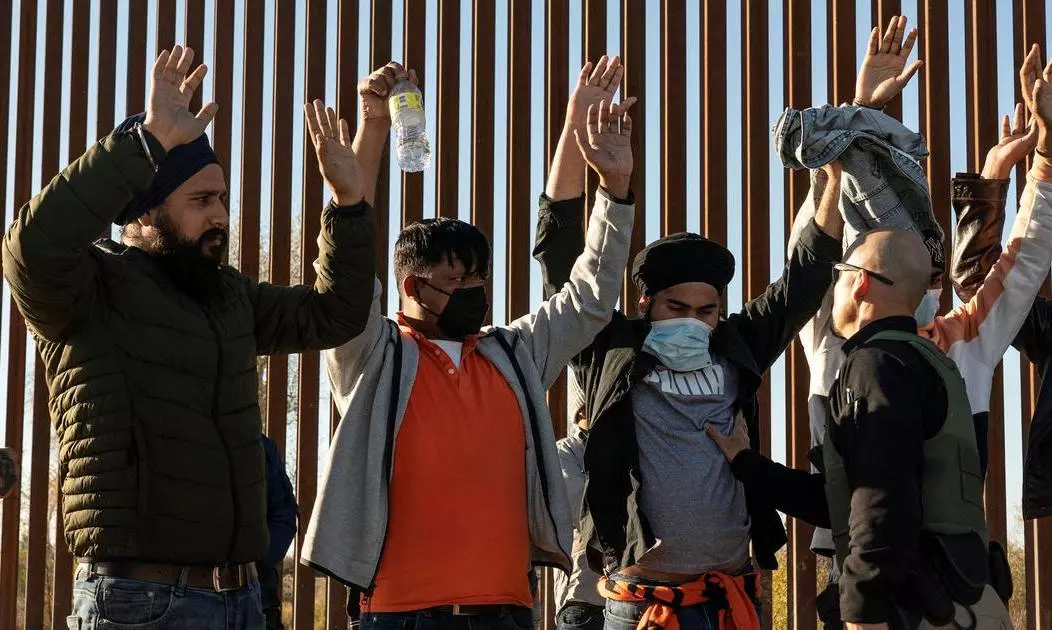Understanding the Surge of Indian Asylum Seekers in the US

The issue of undocumented immigration has become a focal point in US policy discussions, particularly under the leadership of former President Donald Trump. Recently, the spotlight has turned to Indian nationals, with reports indicating that around 18,000 Indians are believed to have entered the US illegally. This situation has prompted Indian Prime Minister Narendra Modi to announce that India would take back its nationals who are in the US illegally and to address the human trafficking networks that facilitate such migration. A recent study by researchers Abby Budiman and Devesh Kapur from Johns Hopkins University provides a comprehensive analysis of the demographics, entry methods, and trends related to undocumented Indians in the US. This article delves into the findings of this study, shedding light on the complexities surrounding Indian asylum seekers and undocumented immigrants.
How Many Illegal Indians Are in the US?
The number of undocumented immigrants in the US is a contentious topic, with various estimates presenting differing figures. According to the Pew Research Center and the Center for Migration Studies of New York, there are approximately 700,000 undocumented Indians in the US as of 2022. This figure positions Indians as the third-largest group of undocumented immigrants, following Mexico and El Salvador. In contrast, the Migration Policy Institute estimates the number to be around 375,000, ranking India fifth among countries of origin for undocumented immigrants. Meanwhile, the Department of Homeland Security (DHS) provides a significantly lower estimate of 220,000 undocumented Indians.
These discrepancies highlight the challenges in accurately assessing the undocumented population. The study indicates that unauthorized immigrants make up about 3% of the total US population and 22% of the foreign-born population. The varying estimates underscore the complexity of tracking undocumented immigrants, particularly given the different methodologies employed by various organizations. The uncertainty surrounding the true size of the undocumented Indian population complicates policy discussions and responses to immigration issues in the US.
Yet Numbers Have Dropped from Their Peak
Despite the ongoing discussions about undocumented immigration, the number of undocumented Indians in the US has seen a significant decline in recent years. The DHS reported a 60% drop in the undocumented Indian population from its peak in 2016, falling from approximately 560,000 to 220,000 by 2022. This decline raises questions about the factors contributing to such a steep decrease. While some individuals may have obtained legal status or returned to India, the exact reasons remain unclear.
Interestingly, the study notes that while the overall undocumented Indian population has decreased, there has been a notable surge in encounters at US borders in 2023. This suggests that the actual number of undocumented Indians may be higher than the current estimates indicate. The data also reveals that visa overstays among Indians have remained stable at around 1.5% since 2016, indicating that the dynamics of undocumented immigration are evolving rather than simply declining.
A Surge – and Shifting Migration Routes
Migration routes for Indian nationals seeking entry into the US have shifted significantly in recent years. Historically, the majority of encounters involving Indian migrants occurred at the US-Mexico border. However, since 2010, there has been a marked increase in encounters at this border, with nearly all Indian crossings taking place there. In the fiscal year 2024, encounters of Indian nationals at the northern US-Canada border surged to 36%, a dramatic increase from just 4% the previous year.
This shift can be attributed to several factors, including changes in visa processing times and increased attempts to cross borders. Canada has become a more accessible entry point for Indian migrants, leading to a rise in crossings from the north. The study suggests that this trend is part of a larger surge of migrants attempting to enter the US, particularly following the election of President Biden. The dynamics of migration are complex, and the increase in Indian asylum seekers reflects broader patterns of migration from various countries.
Who Are the Indians Seeking Asylum?
The demographics of Indian asylum seekers reveal a complex picture. The US immigration system allows individuals detained at the border to undergo credible fear screenings if they fear persecution in their home countries. While administrative data does not provide a complete demographic breakdown, court records indicate that Punjabi speakers have dominated Indian asylum claims since 2001. Punjabi speakers account for a significant portion of asylum applications, followed by Hindi, English, and Gujarati speakers.
The study highlights that most Indian asylum seekers are economic migrants rather than individuals fleeing conflict or persecution. This trend is particularly evident among Punjabis and Gujaratis, who come from wealthier regions of India and are better positioned to afford the high costs associated with migration. The arduous journey to the US can cost 30 to 100 times India’s per capita income, making it accessible primarily to those with financial resources. This economic aspect of migration underscores the motivations driving many Indian nationals to seek asylum in the US.
Observer Voice is the one stop site for National, International news, Sports, Editor’s Choice, Art/culture contents, Quotes and much more. We also cover historical contents. Historical contents includes World History, Indian History, and what happened today. The website also covers Entertainment across the India and World.

